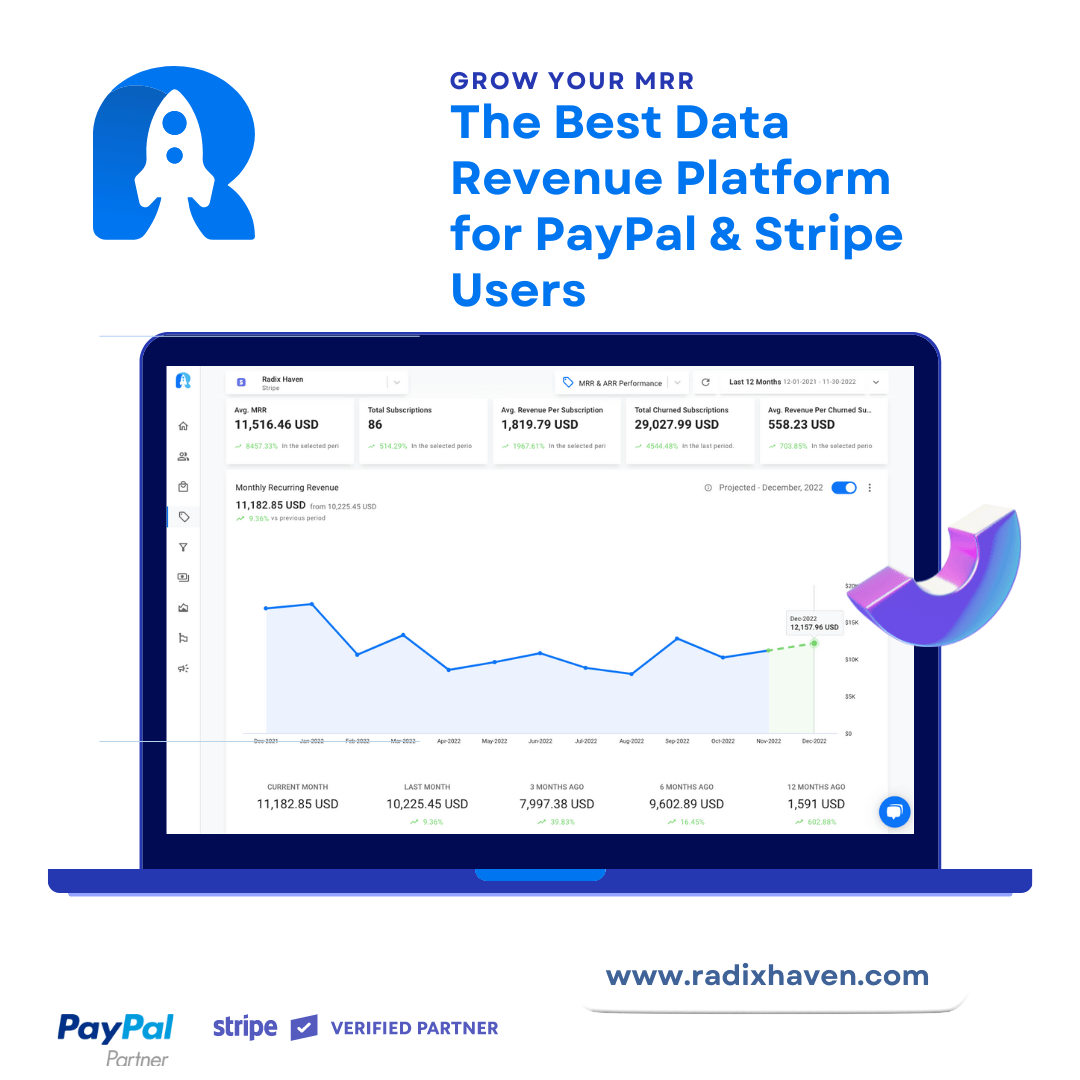Stripe Cohort analysis is a powerful technique used by businesses to understand the behavior of their customers over time. It involves grouping customers into cohorts based on shared characteristics and analyzing their behavior and actions to gain insights into customer retention, engagement, and revenue growth.
In this beginner’s guide to Stripe cohort analysis, we’ll cover the basics of how Stripe cohort analysis works and how it can help you reduce churn and make better product decisions.
What is Stripe Cohort Analysis?
Stripe Cohort analysis is a statistical method used to track the behavior of groups of customers who share a common characteristic or experience. This common characteristic could be anything from the month in which a customer signed up for your service, to their location, to the product or plan they signed up for.
By grouping customers into cohorts based on shared characteristics, you can better understand how they interact with your product or service over time. Stripe Cohort analysis allows you to track metrics like retention rate, revenue per customer, and engagement levels for each cohort, helping you identify trends and make data-driven decisions.
How to Conduct a Stripe Cohort Analysis
To conduct a Stripe cohort analysis, you’ll need to gather data on your customers and group them into cohorts based on a shared characteristic or experience. Here are the steps to follow:
- Define your cohorts: The first step is to define your cohorts based on the characteristic you want to analyze. For example, if you want to analyze retention rates by signup month, you would create cohorts based on the month in which each customer signed up.
- Gather your data: Once you’ve defined your cohorts, you’ll need to gather data on each cohort’s behavior over time. This might include metrics like retention rate, revenue per customer, and engagement levels.
- Calculate your metrics: Once you’ve gathered your data, you can calculate metrics like retention rate, revenue per customer, and engagement levels for each cohort over time. This will allow you to see how each cohort is performing relative to the others.
- Analyze your results: Finally, you can analyze your results to identify trends and patterns in customer behavior over time. This analysis will help you make data-driven decisions about how to improve retention, engagement, and revenue growth.
Benefits of Stripe Cohort Analysis
Stripe Cohort analysis can provide several benefits to businesses, including:
- Improved retention: Stripe Cohort analysis can help you identify which cohorts of customers are most likely to churn and why. By understanding why customers are churning, you can take steps to improve retention and reduce churn.
- Better product decisions: Stripe Cohort analysis can help you identify which product features are most popular with different cohorts of customers. This information can help you prioritize product development efforts and make data-driven decisions about what to build next.
- Increased revenue: By understanding which cohorts of customers are most valuable to your business, you can focus your marketing and sales efforts on acquiring more customers like them. This can lead to increased revenue and profitability.
Tips for Conducting Effective Stripe Cohort Analysis
To get the most out of Stripe cohort analysis, here are a few tips to keep in mind:
- Choose the right cohort: The key to effective cohort analysis is choosing the right cohort to analyze. Make sure you’re grouping customers based on a characteristic that is relevant to your business and will provide useful insights.
- Use a consistent time period: When analyzing cohorts over time, make sure you’re using a consistent time period for each cohort. For example, if you’re analyzing retention rates by signup month, make sure each cohort is analyzed for the same number of months.
- Visualize your data: Stripe Cohort analysis can produce a lot of data, so it’s important to visualize your results in a way that is easy to understand. Use charts and graphs to illustrate trends and patterns in customer behavior over time.
Using Radix to Reduce Churn and Boost Overall KPIs
While cohort analysis can provide valuable insights into customer behavior and help businesses make data-driven decisions, it’s not always easy to conduct it. That’s where Radix comes in.
Radix is a powerful customer data platform that can help businesses conduct effective Stripe cohort analysis and reduce churn. By gathering data from multiple sources and providing a comprehensive view of customer behavior over time, Radix can help businesses identify trends and patterns in customer behavior and take steps to improve retention, engagement, and revenue growth.
With Radix, businesses can:
- Analyze customer behavior across multiple channels: Radix allows businesses to gather data from multiple sources, including web, mobile, and offline interactions. This comprehensive view of customer behavior can help businesses identify trends and patterns that might not be visible with a more limited dataset.
- Create custom segments and cohorts: Radix allows businesses to create custom segments and cohorts based on a wide range of customer attributes and behaviors. This flexibility allows businesses to analyze customer behavior in a way that is relevant to their specific business goals and needs.
- Predict customer behavior: Radix includes machine learning algorithms that can help businesses predict which customers are most likely to churn and which are most likely to make a purchase or engage with your product. This information can help businesses take proactive steps to reduce churn and improve engagement.
To Sum Up..
In conclusion, Stripe cohort analysis is a powerful technique that can help businesses understand customer behavior and make data-driven decisions. By grouping customers into cohorts based on shared characteristics and analyzing their behavior over time, businesses can identify trends and patterns that can help improve retention, engagement, and revenue growth.
However, conducting effective cohort analysis can be challenging, especially with large and complex datasets. That’s where Radix comes in. With its powerful customer data platform, businesses can conduct effective cohort analysis, reduce churn, and boost overall KPIs. So if you’re looking to improve your customer retention and make data-driven decisions, consider using Radix to help you get there.






